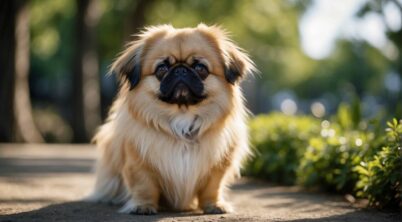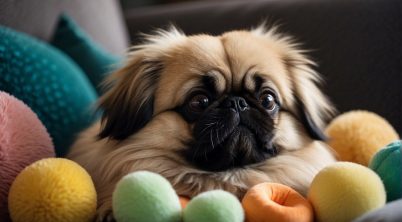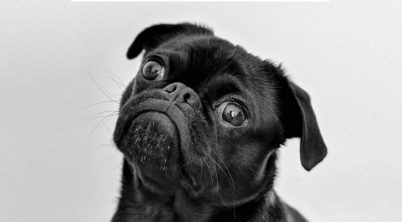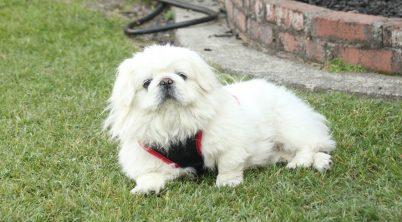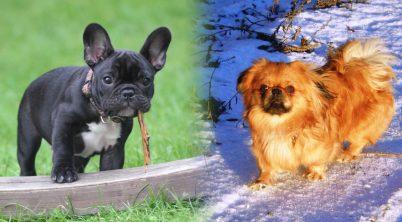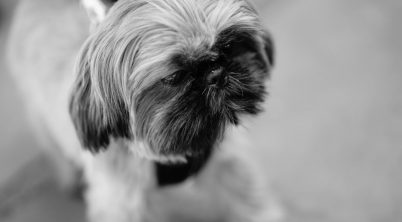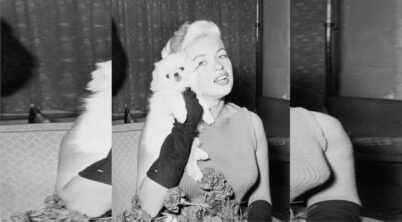The Pekingese breed has long caught the attention of audiences across various genres of cinema, from drama to comedy, and even in adventurous and musical storylines. Known for their distinctive lion-like mane and regal demeanor, these dogs have often been chosen to add a touch of charm and character to the silver screen. Their small size coupled with a bold and affectionate personality makes them an ideal choice for filmmakers looking to evoke empathy or add a humorous twist within their films.
Throughout cinematic history, Pekingese dogs have not just appeared as background props but have played key roles that tug at the heartstrings of movie-goers. From the loyal and persistent Pekingese in the classic adventure film “The 7th Voyage of Sinbad” to the loveable furry companions in contemporary settings, such as Momo in “Kim’s Convenience,” these dogs have proven to be versatile actors. The portrayal of Pekingese in movies often mirrors the enchanting essence of the breed, endearing them to viewers and solidifying their place in film history.
Their roles in films often transcend the traditional pet archetype, allowing them to contribute significantly to the narrative and emotional depth of the story. Whether it’s creating comic relief or becoming an integral part of the protagonist’s journey, Pekingese have shown time and again that they are capable of capturing hearts and holding their own alongside human actors. This ability to adapt to various roles and genres showcases the Pekingese breed as an endearing and enduring fixture in the entertainment world.
Table of Contents
History of the Pekingese Breed in Film
The Pekingese breed has graced the silver screen since the early days of cinema, reflecting its storied past from the imperial courts of China to the lap of Queen Victoria. This section explores the Pekingese breed’s notable journey through film history, from early cinema to contemporary movies.
Early Cinema Appearances
In the 1930s, Pekingese dogs began appearing in films, capitalizing on their exotic origins and association with Eastern royalty. The breed’s link to nobility made it a natural choice for scenes depicting luxury and opulence. Queen Victoria owned a Pekingese named Looty, perhaps heightening the breed’s screen appeal given its royal connections.
Pekingese Dogs in Modern Movies
Moving into the modern era, the portrayal of Pekingese in movies shifted to emphasize their unique personality and charm. While not as prominently featured as in earlier cinema, Pekingese have continued to appear in various roles, often playing up their lion-like appearance and spirited demeanor bestowed by Chinese emperors who favored them.
Iconic Pekingese Characters in Film
Pekingese dogs have graced the silver screen in various movies, often stealing scenes with their distinct appearance and charming antics.
Beverly Hills Chihuahua’s Representation
In the movie “Beverly Hills Chihuahua,” a Pekingese named Yoda played a memorable role. The film, which centers around a pampered Chihuahua, also showcases the diversity of dog breeds by including characters like Yoda, demonstrating how even in a light-hearted family comedy, a Pekingese can leave a lasting impression on audiences.
Other Notable Film Appearances
- The Ugly Dachshund: This film features a Pekingese character named Mimi who shares the screen with a Great Dane mistakenly believing itself to be a Dachshund. Mimi brings a touch of Pekingese personality to this classic Disney comedy.
- The 7th Voyage of Sinbad: In this fantasy adventure movie, a Pekingese named Billy embodies the idea of loyalty in a family film, contributing to the magical atmosphere of the movie.
One must not forget Gizmo, whose appearances in the TV show “Pawn Stars” has made this Pekingese a familiar face to many viewers outside of the traditional film landscape. Although “Pawn Stars” is not a movie, Gizmo’s repeated appearances have made him a notable Pekingese in visual entertainment.
The information on Pekingese such as Taz and Momo from other shows like “Kim’s Convenience,” while relevant to the broader topic of Pekingese in the media, does not specifically apply to the film industry and thus are mentioned here for context but not elaborated upon in this section, which focuses on film.
Cultural Impact of Pekingese Depictions
The Pekingese breed has a significant presence in film, often symbolizing cultural values like love and loyalty, and accentuating the charm and beauty attributed to this ancient Chinese breed.
Influence on Dog Breed Popularity
The depiction of Pekingese in movies has historically influenced their popularity. When a Pekingese appears on screen, displaying its royal and noble lineage, it often sparks an interest among viewers. This interest has at times translated into a measurable uptick in breed adoptions and an increased fascination with their distinctive features—such as their “lion-like” mane and compact, sturdy physique.
- Popularity Metrics: After film portrayals, breeders and shelters may see a rise in inquiries for Pekingese dogs.
- Cultural Perception: Their depiction in media reinforces the Pekingese’s status as a cherished jewel of the Chinese cultural heritage.
Representation in International Cinema
In international cinema, Pekingese dogs are not merely featured for their physical beauty but also for their cultural significance. They often serve as cultural ambassadors that embody centuries of Chinese history. The Pekingese’s representation goes beyond just being a pet; they are seen as embodiments of certain aspects of Chinese culture, including a deep association with imperial charm and as custodians of tradition.
- International Films: Portrayals in films across the globe echo the breed’s traits of love and loyalty.
- Cultural Identity: The presence of a Pekingese in movies can articulate a storyline’s connection to China and infuse a narrative with cultural depth.
The Pekingese Breed’s Traits and Characteristics
The Pekingese dog boasts a unique combination of regal dignity and charming companionship, encapsulated in a compact body. Physical Attributes and Personality and Behavior are fundamental to understanding what these dogs bring to their roles on screen.
Physical Attributes
Height: Typically 6-9 inches at the withers
Weight: Ranges from 7 to 14 pounds, with the breed standard disqualifying those over 14 pounds.
Build: Compact, stocky, and muscular, embodying strength and determination in a small frame.
Coat: Exhibits a long, luxurious mane, resembling a lion’s, requiring regular brushing to maintain its splendor.
Snout: Notably short, contributing to the breed’s distinctive facial expression.
Personality and Behavior
Temperament: They are known to be loyal and affectionate with their owners, yet they may exhibit independence.
Watchdog Ability: Pekingese are alert and can be counted on to announce visitors with a bark that belies their small size.
Exercise Needs: Moderate; daily walks suffice, but overexertion should be avoided due to potential breathing difficulties.
Health Considerations: Prone to certain health problems, including those related to their compact face structure.
Vigilance in care and awareness of the Pekingese’s exercise and health needs ensure that these canines thrive both on and off screen.
Training and Care for a Pekingese Movie Star
Pekingese dogs that grace the silver screen require meticulous grooming and specialized care to ensure they remain healthy while performing. Their thick coat and compact size present unique challenges in both appearance and health maintenance.
Grooming Requirements
Grooming a Pekingese is essential, particularly for those in the limelight. Their luxurious double-coat demands regular brushing to prevent mats and tangles, often necessitating professional grooming services. They should be bathed frequently using high-quality dog shampoo to maintain the sheen and health of their coat, which is especially important prior to filming. Care must be taken with their eyes and face, as the breed’s distinctive facial structure can trap dirt and lead to irritation.
- Daily: Brush to remove loose hair and prevent matting.
- Weekly: Check and clean ears to avoid infections.
- Monthly: Trim nails and groom to keep fur in optimal condition.
Handling Health Challenges
Pekingese are prone to certain health challenges that require attentive care. Their compact shape and short muzzle often result in breathing issues; thus, they need an environment with controlled temperature to prevent overheating and stress on their respiratory system.
- Breathing: Watch for signs of respiratory distress, especially during exercise.
- Exercise: Provide moderate, regular activity but avoid strenuous exercises; two 20-minute walks per day are usually sufficient.
- Diet: Offer a balanced diet tailored for small breeds with specific needs—avoid overfeeding to prevent obesity, which can exacerbate health and breathing problems.
Regular veterinary checkups are non-negotiable to monitor health issues like heart murmurs and eye problems that the breed is predisposed to. Ensuring a Pekingese maintains an ideal weight is vital for their overall health, particularly for those under the spotlight, where agility and alertness are paramount.

